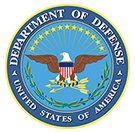
The Small Business Innovation Research (SBIR) program is a highly competitive program that encourages domestic small businesses to engage in Federal Research/Research and Development (R/R&D) that has the potential for commercialization. Through a competitive awards-based program, SBIR enables small businesses to explore their technological potential and provides the incentive to profit from its commercialization. By including qualified small businesses in the nation"s R&D arena, high-tech innovation is stimulated and the United States gains entrepreneurial spirit as it meets its specific research and development needs.
Read more
Small Business Technology Transfer (STTR) is another program that expands funding opportunities in the federal innovation research and development (R&D) arena. Central to the program is expansion of the public/private sector partnership to include the joint venture opportunities for small businesses and nonprofit research institutions. The unique feature of the STTR program is the requirement for the small business to formally collaborate with a research institution in Phase I and Phase II. STTR"s most important role is to bridge the gap between performance of basic science and commercialization of resulting innovations.
Read more
Federal and State Technology Partnership (FAST) Program is a competitive grants program designed to strengthen the technological competitiveness of small businesses. It improves the participation of small technology firms in the innovation and commercialization of new technology, thereby helping keep the United States on the cutting edge of research and development in science and technology. All 50 states, the District of Columbia, Puerto Rico, the Virgin Islands, Guam and the American Samoa may receive funding for an array of services (e.g., outreach and technical assistance) in support of the Small Business Innovation Research (SBIR) and Small Business Technology Transfer (STTR) programs.
Read more
Every year, hundreds of companies participate in the SBIR program. Of those, some stand out as representative of the spirit and intent of the program. Each year the SBA recognizes those companies with the Tibbetts Award. Those firms that continue this excellence year after year are recognized with the SBIR Hall of Fame award.
Read more
SBA Role
The US Small Business Administration serves as the coordinating agency for the SBIR program. It directs the agencies' implementation of SBIR, reviews their progress, and reports annually to Congress on its operation. SBA is also the information link to SBIR program.
For more information on the SBIR Program, please contact:
US Small Business Administration
Office of Technology
409 Third Street, SW
Washington, DC 20416
(202) 205-6450
All of SBA's programs and services are extended to the public on a nondiscriminatory basis.

Congressional History
SBIR
The SBIR program was established under the Small Business Innovation Development Act of 1982 (P.L. 97-219) with the purpose of strengthening the role of innovative small business concerns in Federally-funded research and development (R&D). Through FY2009, over 112,500 awards have been made totaling more than $26.9 billion.
In December 2000, Congress passed the Small Business Research and Development Enhancement Act (P.L. 102-564) The program was reauthorized until September 30, 2008 by the Small Business Reauthorization Act of 2000 (P.L. 106-554). Subsequently, Congress passed numerous extensions, the most recent of which extends the SBIR program through 2017.
STTR
Modeled after the Small Business Innovation Research (SBIR) program, STTR was established as a pilot program by the Small Business Technology Transfer Act of 1992 (Public Law 102-564, Title II). Government agencies with R&D budgets of $1 billion or more are required to set aside a portion of these funds to finance the STTR activity. In 2001, Congress passed the Small Business Reauthorization Act of 1997 (P.L. 105-135). The program was reauthorized again until September 30, 2009, by the Small Business Technology Transfer Program Reauthorization Act of 2001 (P.L.107-50). Subsequently, Congress has passed numerous extensions, the most recent of which extends the STTR program through 2017. The goal of the STTR program is to facilitate the transfer of technology developed by a research institution through the entrepreneurship of a small business concern.
FAST Partnership Program
Congress sought to reduce the variation within state technology programs that foster economic development among small high-technology firms. In response, the Consolidated Appropriations Act of 2001, codified at 15 U.S.C. §657d(c), established the FAST program. The program expired on September 30, 2005 and was reestablished under the Consolidated Appropriations Act of 2010.

Eligibility
SBIR
Only United States small businesses are eligible to participate in the SBIR program. An SBIR awardee must meet the following criteria at the time of Phase I and II awards:
- Organized for profit, with a place of business located in the United States;
- More than 50 percent owned and controlled by one or more individuals who are citizens of, or permanent resident aliens in, the United States, or by another for-profit business concern that is more than 50% owned and controlled by one or more individuals who are citizens of, or permanent resident aliens in, the United States; and
- No more than 500 employees, including affiliates
- For awards from agencies using the authority under 15 U.S.C. 638(dd)(1), an awardee may be owned and controlled by more than one VC, hedge fund, or private equity firm so long as no one such firm owns a majority of the stock.
- Phase I awardees with multiple prior awards must meet the benchmark requirements for progress toward commercialization.
See the Eligibility Guide for more detailed information.
STTR
Only United States small businesses are eligible to participate in the STTR program. The small business must meet all of the following criteria at time of award:
- Organized for profit, with a place of business located in the United States;
- At least 51 percent owned and controlled by one or more individuals
who are citizens of, or permanent resident aliens in, the United States, and; - No more than 500 employees, including affiliates.
The nonprofit research institution must also meet certain eligibility criteria:
- Located in the US
- Meet one of three definitions:
- Nonprofit college or university
- Domestic nonprofit research organization
- Federally funded R&D center (FFRDC)
STTR differs from SBIR in three important aspects:
- The SBC and its partnering institution are required to establish an
intellectual property agreement detailing the allocation of intellectual
property rights and rights to carry out follow-on research, development
or commercialization activities. - STTR requires that the SBC perform at least 40% of the R&D and
the single partnering research institution to perform at least 30% of
the R&D. - Unlike the SBIR program, STTR does not require the Principal
Investigator to be primarily employed by the SBC.
 SBIR STTR Presentation
SBIR STTR Presentation











